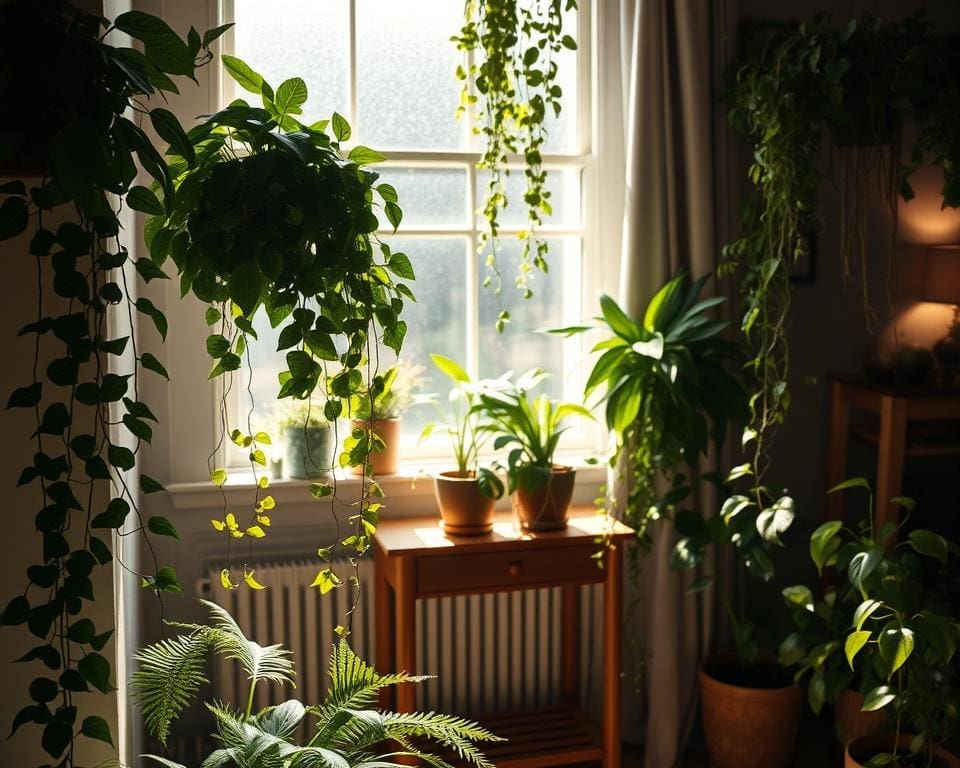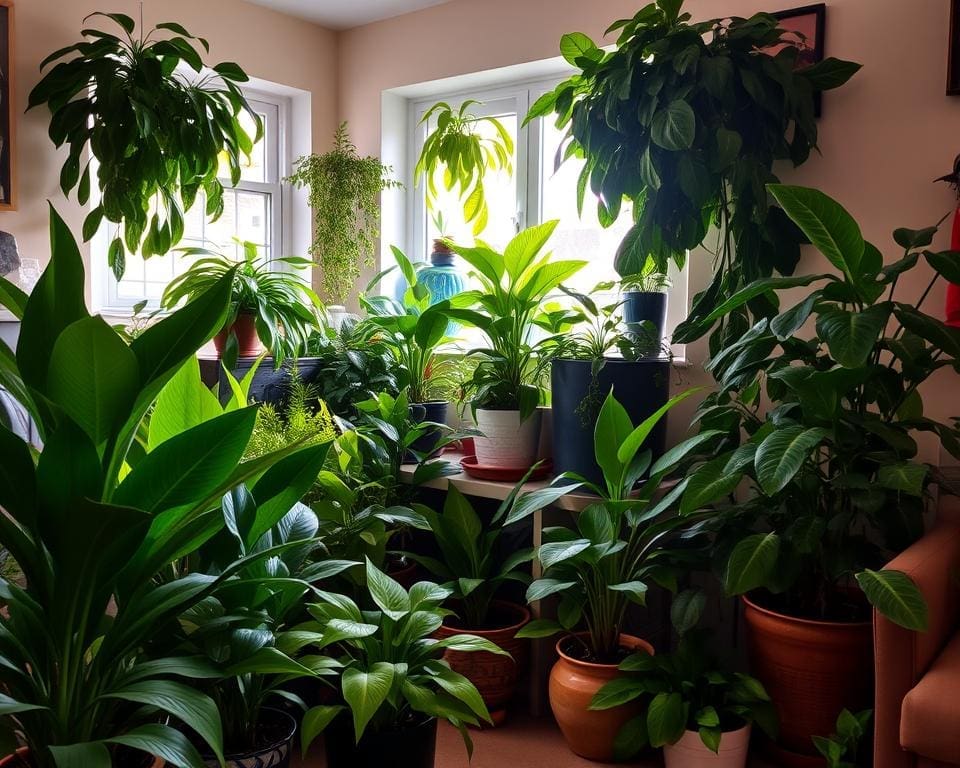In modern interiors, where natural light can often be scarce, selecting the right houseplants becomes crucial for cultivating a vibrant atmosphere. The best plants for low-light interiors not only provide a refreshing touch of nature but also enhance air quality and contribute to a sense of well-being. This article delves into the world of low-light plants, examining the most suitable indoor plants for low light conditions, care tips, and creative styling ideas. Discover how even the shadiest corners of your home can come alive with greenery.
Introduction to Low-Light Indoor Plants
Low light indoor plants offer a fantastic way to enhance your living space, especially in areas with limited natural sunlight. Understanding the light levels in your home is vital when selecting these plants. Most households feature a range of light conditions, from bright, sunlit rooms to shadowy corners. Shade-loving houseplants naturally flourish in these lower light situations, making them a perfect choice for various indoor environments.
Understanding Light Levels in Your Home
Identifying the light levels in your home helps to create an optimal setting for growing low light indoor plants. Observing the amount of sunlight entering your spaces throughout the day provides clarity on which plants will thrive. Bright areas suit more light-hungry plants, while darker corners are ideal for shade-loving houseplants such as the Snake Plant or Pothos. By carefully analysing these levels, you can create a harmonious balance between your plants and their environment.
Benefits of Adding Greenery to Low-Light Spaces
Incorporating indoor plants into your décor comes with many benefits. They enhance aesthetics, adding a splash of colour and vibrancy to otherwise dull areas. The benefits of indoor plants extend beyond visual appeal; they help purify the air by absorbing toxins and releasing oxygen. This process significantly improves air quality, which contributes to overall wellness within your home. Adding greenery can reduce stress levels and foster a serene atmosphere, promoting relaxation in your indoor spaces.

What are the best plants for low-light interiors?
Choosing the right houseplants for low light can transform your home into a tranquil oasis. Low light plant species, often found thriving in the shadows of larger plants in their natural habitats, possess remarkable adaptability. With a deeper understanding of the light levels in your interiors, you can carefully select options that will flourish even in dim conditions.
Understanding Light Levels in Your Home
In many homes, light levels can vary considerably from room to room. Plants that require minimal sunlight, such as Pothos and Snake Plants, often thrive in spaces that receive indirect light or are further from windows. Identify the specific light conditions in your home to choose the best houseplants for low light environments. Observing how natural light moves through your space throughout the day will help you gauge which areas might suit low light plant species.
Benefits of Adding Greenery to Low-Light Spaces
Incorporating houseplants for low light not only enhances the aesthetic appeal of your home but also improves air quality and instils a sense of calm. These resilient plants, such as the ZZ Plant, require less upkeep and can elevate your mood simply by being in your environment. The presence of greenery fosters a comforting atmosphere, making your living spaces feel more inviting and vibrant.
Popular Low-Light Plant Species
For anyone looking to enhance their indoor space with vibrant greenery, certain low-light plant species stand out. The Snake Plant, Pothos, and ZZ Plant not only thrive in limited light but also offer unique aesthetics and are among the best office plants for low light. Each of these easy care low light plants brings its own charm and resilience, making them ideal companions for both home and workplace environments.
Snake Plant: A Hardy Favourite
The Snake Plant, also known as Sansevieria, showcases striking, upright leaves that add a dramatic flair to any room. Its robust nature makes it nearly indestructible, requiring minimal attention and infrequent watering. This plant not only fits seamlessly into various décor styles but also contributes significantly to air purification, making it a popular choice for indoor spaces.
Pothos: Versatile and Easy Care
Pothos, with its lush trailing vines, offers remarkable versatility in styling. It flourishes even in low-light conditions, making it a favourite among busy individuals who appreciate easy care low light plants. Whether draping over a shelf or cascading from a hanging basket, this plant brings life into any area, combining beauty and resilience effortlessly.
ZZ Plant: Resilient and Beautiful
The ZZ Plant, or Zamioculcas zamiifolia, stands out with its glossy, dark green foliage. It thrives in low-light environments and can survive long periods without water, making it one of the best office plants for low light. Its graceful appearance not only enhances aesthetic appeal but also requires little maintenance, fitting perfectly into the lifestyles of those seeking low-maintenance greenery.
Choosing the Right Houseplants for Low Light
When it comes to selecting houseplants well-suited for low light environments, understanding the unique needs of each plant is crucial. Factors such as light availability, humidity, and temperature significantly influence the health of your green companions. Choosing houseplants that thrive in low light conditions can transform your indoor spaces into green havens.
Factors to Consider for Low-Light Conditions
Evaluate the specifics of your indoor environment before selecting low light plants. Consider the following:
- Assess the amount of natural light each room receives throughout the day.
- Identify areas with constant low light, as these may require more tolerant varieties.
- Recognise the humidity levels, as some plants prefer more damp conditions.
- Consider room temperature, keeping in mind that certain species require warmer environments.
How to Assess Your Room’s Light Levels
To make informed decisions about which low light indoor tree or plants to choose, observe your space carefully. Start by determining:
- Which areas enjoy direct sunlight, albeit briefly, and which remain in the shade.
- The duration of light exposure in less illuminated spots throughout the day.
- Seasonal variations in light, as these can influence plant growth.
Balancing these factors will ensure that the plants you select not only survive but flourish in their new indoor environment. Embracing the diversity of low light plants available can create a vibrant and lively atmosphere in your home.
Easy Care Low Light Plants for Busy Lifestyles
In today’s fast-paced world, selecting low maintenance indoor plants can truly transform your space without adding stress to your schedule. These easy care plants not only enhance the aesthetics of your home or office but also require minimal effort to thrive. Ideal for busy individuals or beginners in plant care, these selections work well in low-light environments.
Low-Maintenance Options for Beginners
Starting your plant journey can be simplified by choosing the right species. Options like the Snake Plant, peace lily, and pothos shine as the best office plants low light. They thrive with minimal attention and only need occasional watering to flourish. These plants not only purify air but also bring a refreshing vibe to any indoor setting.
Perfect Plants for the Office Environment
In the workplace, incorporating low maintenance indoor plants can create a serene atmosphere conducive to productivity. Plants such as the ZZ Plant and spider plant can endure less sunlight and occasional neglect. Their hardiness makes them perfect companions, warding off workplace stress while adding a vibrant touch to your environment.
Creating a Low-Light Plant Arrangement
Designing a harmonious low light plant arrangement can significantly enhance the aesthetic of your indoor spaces. For a visually appealing setup, group indoor plants low light in clusters that highlight their unique characteristics. This approach not only adds depth but also complements your existing decor beautifully.
Styling Tips for Your Indoor Space
When styling with low light plants, consider these tips:
- Vary the heights of your plants to create layers of interest.
- Incorporate different textures and shades for a vibrant look.
- Position plants on shelves or in hanging baskets to utilise vertical space.
- Select pots that harmonise with your room’s colour palette.
Combining Different Low-Light Plants
Pairing various low light plants can lead to a thriving ecosystem in your home. Some plants can enhance moisture levels, benefitting their companions and improving overall health. For example, combining a Snake Plant with a Pothos can create a dynamic low light plant arrangement that remains visually striking and healthy.
Maintaining Your Low Light Indoor Plants
To ensure your low light indoor plants thrive, regular maintenance is essential. Conducting frequent checks for pests and diseases protects your greenery from potential threats. Cleaning the leaves is equally important as it allows better light absorption, which is vital in low light conditions. Incorporating these practices into your routine will help maintain the health and vibrancy of your plants.
During the growing season, adopting a careful watering strategy is imperative. It’s advisable to sparsely water your plants and apply a diluted fertiliser to promote growth. Proper drainage is crucial to prevent root rot, a common issue if plants sit in excess water. Tailoring your watering and fertilising schedule to meet the specific needs of each species will enhance their overall well-being.
Understanding the unique requirements of each plant species, including water, light, and soil preferences, is key to effective low light indoor plant care. By staying informed and attentive, you can cultivate a lush collection that brings life and beauty to your home environment. Embracing these maintenance tips allows you to enjoy the advantage of greenery even in low light conditions.









